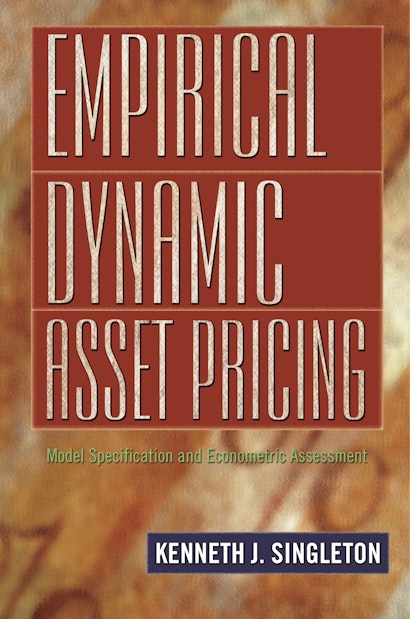Written by one of the leading experts in the field, this book focuses on the interplay between model specification, data collection, and econometric testing of dynamic asset pricing models. The first several chapters provide an in-depth treatment of the econometric methods used in analyzing financial time-series models. The remainder explores the goodness-of-fit of preference-based and no-arbitrage models of equity returns and the term structure of interest rates; equity and fixed-income derivatives prices; and the prices of defaultable securities.
Singleton addresses the restrictions on the joint distributions of asset returns and other economic variables implied by dynamic asset pricing models, as well as the interplay between model formulation and the choice of econometric estimation strategy. For each pricing problem, he provides a comprehensive overview of the empirical evidence on goodness-of-fit, with tables and graphs that facilitate critical assessment of the current state of the relevant literatures.
As an added feature, Singleton includes throughout the book interesting tidbits of new research. These range from empirical results (not reported elsewhere, or updated from Singleton’s previous papers) to new observations about model specification and new econometric methods for testing models. Clear and comprehensive, the book will appeal to researchers at financial institutions as well as advanced students of economics and finance, mathematics, and science.
Kenneth J. Singleton is Adams Distinguished Professor of Management and Senior Associate Dean for Academic Affairs at the Graduate School of Business, Stanford University. A Fellow of the Econometric Society, he is the recipient of the organization's Frisch Prize. He is also the recipient of the Smith-Breeden Distinguished Paper Award from the Journal of Finance. Singleton is a director of the American Finance Association and was previously an editor of the Review of Financial Studies. He is coauthor, with Darrell Duffie, of Credit Risk: Pricing, Management, and Measurement (Princeton).
"This book is at the intersection of modern time series and modern asset pricing theory. . . . Ken Singleton gives us the ultimate treatise of empirical asset pricing. . . . [I]t is sure to become a classic work in this field."—Economic Dynamics
"This seminal book provides for an in-depth treatment (i) of the various econometric methods used in dynamic asset pricing models, (ii) of pricing kernels, preferences and dynamic asset pricing models and (iii) of no-arbitrage based dynamic asset pricing models. The book contains sixteen chapters and really does provide for much more than an overview of those three broad topics mentioned above."—Emmanuel Haven, Mathematical Reviews
"Writing a treatise about empirical asset pricing is as much art as it is science. Professor Singleton intertwines these two dimensions with remarkable skill to provide a critical review of the field. . . . The book accomplishes the goal of great clarity without compromising on the depth of the treatment. . . . The author deserves special praise for encouraging the reader to perceive various compromises involved in financial modeling. The text provides a road map for novices and inspiration for seasoned researchers in the field. As such, it is certain to become a classic of empirical asset pricing."—Anna Cieslak, Financial Markets and Portfolio Management
"Writing a treatise about empirical asset pricing is as much art as it is science. Professor Singleton intertwines these two dimensions with remarkable skill to provide a critical review of the field. As such Empirical Dynamic Asset Pricing extends far beyond a textbook treatment of the subject. It gives the reader a unique opportunity to look at dynamic asset pricing models through the eyes of a researcher who has shaped their development during 25 years of his influential work."—Anna Cieslak, Financial Markets and Portfolio Management
"This book fills a huge gap. It goes beyond the detailed description of methodology to provide a critical overview of findings in the literature. As a result, it not only offers the state of the art, but identifies the paths for future research—an invaluable textbook feature. With more than twenty-five years' worth of incredibly influential research on the topic, Kenneth Singleton was the perfect person to write it."—Mikhail Chernov, Columbia University

